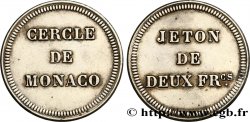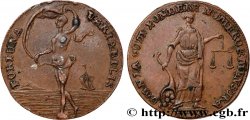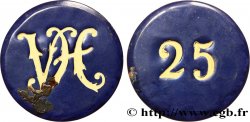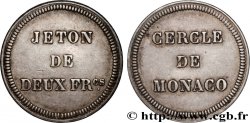E-auction 538-460930 - fjt_828993 - CASINOS AND GAMES SERIE DE L’HOMBRE - VI n.d.
Чтобы принять участие в торгах, вы должны войти в систему и стать подтвержденным участником аукциона. Войдите, чтобы сделать ставку. Ваш аккаунт будет подтвержден в течение 48 часов. Не ждите до закрытия торгов, чтобы зарегистрироваться.Сделав ставку на данный товар, вы вступаете в юридическое соглашение на покупку выбранного товара и нажатием кнопки «Сделать ставку» подтверждаете принятие вами условий интернет-аукционов cgb.fr.
Ставка может бить сделана только в полном эквиваленте евро. Торги закроются согласно времени, указанному в описании товара, все ставки, сделанные после закрытия торгов, учитываться не будут. Не следует откладывать предложение вашей ставки до последнего момента, так как система может не успеть обработать вашу заявку, и ваша ставка не будет принята. Более детальную информацию вы найдёте здесь: FAQ по интернет-аукционам.
БЕСПЛАТНО.
БЕСПЛАТНО.
| Оценить : | 40 € |
| Цена : | 15 € |
| Максимальная предлагаемая цена : | 15 € |
| Конец торгов : | 07 August 2023 18:37:40 |
| Участников : | 5 Участников |
Тип SERIE DE L’HOMBRE - VI
Дата: n.d.
Монетный двор / Город: s.l
Металл: copper
Проба: 500 ‰
Диаметр: 33 mm
Ориентация осей монеты: 12 h.
Вес: 10,85 g.
Век: Lisse
Пуансон: MAIN Cuivre
Редкость: R1
Лицевая сторона
Обратная сторона
Комментарий
Le jeu de l’Hombre, d’origine espagnol « Hombre », (Homme
en français), a été joué en France durant la seconde moitié du
XVIIe et au début du XVIIIe siècle. Il a perdu, par la suite, de
sa faveur auprès des joueurs pour être remplacé par ses descendants le whist, puis le bridge. Il est probablement le premier jeu de levées à enchères connu de l’histoire des jeux de
cartes. Il continue à être joué avec des règles très proches dans
d’autres pays, sous le nom de tresillo en Espagne, l’Hombre au
Danemark, le Rocambor au Pérou et en Bolivie et le Tridge en
Angleterre.
Le jeu de l’Hombre est un jeu de commerce. Les tenanciers
d’académie de jeux de commerce percevaient un droit d’entrée sur leurs clients et un pourcentage sur les jeux de cartes
utilisés. Ce jeu se joue à 3 personnes. Il comporte un jeu classique de 52 cartes, auquel on retire préalablement les quatre
dix, les quatre neuf et les quatre huit. Chaque joueur reçoit
neuf cartes et dispose de 20 jetons et neuf fiches.
Cette série de jetons, destinée au jeu de « l’Hombre », comprenait 63 jetons différents gravés par Jérôme Roussel (1663-
1713), graveur contemporain du règne de Louis XIV, à qui
l’on doit de nombreuses médailles. Il est aussi l’auteur de
quelques jetons, avec le buste du roi Louis XIV et signés H.
R. F ou R.
Sur les 63 jetons gravés par J. Roussel, 60 jetons sont tirés des
Métamorphoses d’Ovide : les 20 premiers jetons concernent
le Livre I, les 20 autres jetons le Livre II et les 20 derniers, la
Livre III. Ces jetons ont été émis en bronze et en argent.
Ovide (Publius Ovidius Naso) est un poète latin, né à Sulmone en 43 avant J.C. et mort en exil à Tomis, sur le PontEuxin en 16 après J.C. Il appartenait à une famille de petite
noblesse, sans grande fortune. Il étudia à Rome, puis fit le
voyage d’Athènes, visita la Sicile, la Grèce, l’Asie Mineure, en
compagnie du poète Macer, son parent. De retour à Rome, il
débuta brillamment au barreau et occupa quelques charges
publiques. Mais le goût de la poésie l’emporta bientôt. À
20 ans, il était presque célèbre ; Virgile, Horace, Properce,
Gallus l’admiraient et l’encourageaient.
Ce n’est qu’arrivé à quarante ans qu’Ovide composa ses « Métamorphoses », son œuvre capitale. Les « Métamorphoses » est
un poème mythologique en quinze livres. Les fables les plus
disparates, au nombre de deux cent quarante-six, s’y succèdent, par des transitions très artificielles. Elles ont ceci de
commun qu’elles se rapportent toutes à la transformation
d’un être humain en pierre, en plante ou en animal. Ovide
voit surtout dans les « Métamorphoses » une riche matière, de
brillantes descriptions, des récits de toutes sortes. Le ton y est
varié. L’œuvre a du succès dés l’époque d’Ovide. Pour les auteurs du Moyen Age, elle représente un réservoir inépuisable
de citations et d’histoires. À la Renaissance, avec l’invention
de l’imprimerie, les éditions se succèdent. Depuis, au long des
siècles, « les Métamorphoses » continuent à inspirer poètes,
peintres et musiciens. Elles font partie du patrimoine culturel
de l’Europe. Un autre intérêt du livre est qu’il nous fournit,
au fil du récit, toutes sortes de renseignements sur la manière
de vivre des Anciens.
Les 58 jetons décrits dans cette étude sont en argent. De Ø
32mm, avec un poids variant de 11 à 12 grammes. .
The game of Hombre, of Spanish origin \\\"Hombre\\\" (Man in French), was played in France during the second half of the 17th and the beginning of the 18th century.. It subsequently fell out of favor with players and was replaced by its descendants, whist, and then bridge.. It is probably the first known auction trick-taking game in the history of card games.. It continues to be played with very similar rules in other countries, under the name Tresillo in Spain, Hombre in Denmark, Rocambor in Peru and Bolivia and Tridge in England.
The game of Hombre is a trading game. The owners of the commercial gaming academy collected an entrance fee from their customers and a percentage on the card games used.. This game is played by 3 people. It consists of a classic deck of 52 cards, from which the four tens, four nines and four eights are first removed.. Each player receives nine cards and has 20 tokens and nine slips..
This series of tokens, intended for the game of \\\"Hombre\\\", included 63 different tokens engraved by Jérôme Roussel (1663-1713), a contemporary engraver of the reign of Louis XIV, to whom we owe numerous medals. He is also the author of some tokens, with the bust of King Louis XIV and signed H.
R. Oven.
Of the 63 tokens engraved by J. Roussel, 60 tokens are taken from Ovid's Metamorphoses: the first 20 tokens concern Book I, the other 20 tokens Book II and the last 20, Book III. These tokens were issued in bronze and silver.
Ovid (Publius Ovidius Naso) is a Latin poet, born in Sulmona in 43 BC. C. and died in exile in Tomis, on the Euxine Sea in 16 AD. C. He belonged to a family of minor nobility, without great fortune.. He studied in Rome, then traveled to Athens, visited Sicily, Greece, Asia Minor, in the company of the poet Macer, his relative. Back in Rome, he made a brilliant start at the bar and held several public offices.. But the taste for poetry soon won out. At 20, he was almost famous; Virgil, Horace, Propertius, Gallus admired and encouraged him..
It was only when he was forty that Ovid composed his \\\"Metamorphoses\\\", his major work.. The \\\"Metamorphoses\\\" is a mythological poem in fifteen books. The most disparate fables, two hundred and forty-six in number, follow one another, through very artificial transitions. They have in common that they all relate to the transformation of a human being into stone, a plant or an animal.. Ovid sees in the \\\"Metamorphoses\\\" above all a rich material, brilliant descriptions, stories of all kinds. The tone is varied there.. The work was successful from the time of Ovid. For medieval authors, it represents an inexhaustible reservoir of quotations and stories.. During the Renaissance, with the invention of printing, editions followed one another. Since then, throughout the centuries, “the Metamorphoses” have continued to inspire poets, painters and musicians.. They are part of Europe's cultural heritage. Another interest of the book is that it provides us, throughout the story, all sorts of information on the way of life of the Ancients..
The 58 tokens described in this study are made of silver. Ø 32mm, with a weight varying from 11 to 12 grams.
en français), a été joué en France durant la seconde moitié du
XVIIe et au début du XVIIIe siècle. Il a perdu, par la suite, de
sa faveur auprès des joueurs pour être remplacé par ses descendants le whist, puis le bridge. Il est probablement le premier jeu de levées à enchères connu de l’histoire des jeux de
cartes. Il continue à être joué avec des règles très proches dans
d’autres pays, sous le nom de tresillo en Espagne, l’Hombre au
Danemark, le Rocambor au Pérou et en Bolivie et le Tridge en
Angleterre.
Le jeu de l’Hombre est un jeu de commerce. Les tenanciers
d’académie de jeux de commerce percevaient un droit d’entrée sur leurs clients et un pourcentage sur les jeux de cartes
utilisés. Ce jeu se joue à 3 personnes. Il comporte un jeu classique de 52 cartes, auquel on retire préalablement les quatre
dix, les quatre neuf et les quatre huit. Chaque joueur reçoit
neuf cartes et dispose de 20 jetons et neuf fiches.
Cette série de jetons, destinée au jeu de « l’Hombre », comprenait 63 jetons différents gravés par Jérôme Roussel (1663-
1713), graveur contemporain du règne de Louis XIV, à qui
l’on doit de nombreuses médailles. Il est aussi l’auteur de
quelques jetons, avec le buste du roi Louis XIV et signés H.
R. F ou R.
Sur les 63 jetons gravés par J. Roussel, 60 jetons sont tirés des
Métamorphoses d’Ovide : les 20 premiers jetons concernent
le Livre I, les 20 autres jetons le Livre II et les 20 derniers, la
Livre III. Ces jetons ont été émis en bronze et en argent.
Ovide (Publius Ovidius Naso) est un poète latin, né à Sulmone en 43 avant J.C. et mort en exil à Tomis, sur le PontEuxin en 16 après J.C. Il appartenait à une famille de petite
noblesse, sans grande fortune. Il étudia à Rome, puis fit le
voyage d’Athènes, visita la Sicile, la Grèce, l’Asie Mineure, en
compagnie du poète Macer, son parent. De retour à Rome, il
débuta brillamment au barreau et occupa quelques charges
publiques. Mais le goût de la poésie l’emporta bientôt. À
20 ans, il était presque célèbre ; Virgile, Horace, Properce,
Gallus l’admiraient et l’encourageaient.
Ce n’est qu’arrivé à quarante ans qu’Ovide composa ses « Métamorphoses », son œuvre capitale. Les « Métamorphoses » est
un poème mythologique en quinze livres. Les fables les plus
disparates, au nombre de deux cent quarante-six, s’y succèdent, par des transitions très artificielles. Elles ont ceci de
commun qu’elles se rapportent toutes à la transformation
d’un être humain en pierre, en plante ou en animal. Ovide
voit surtout dans les « Métamorphoses » une riche matière, de
brillantes descriptions, des récits de toutes sortes. Le ton y est
varié. L’œuvre a du succès dés l’époque d’Ovide. Pour les auteurs du Moyen Age, elle représente un réservoir inépuisable
de citations et d’histoires. À la Renaissance, avec l’invention
de l’imprimerie, les éditions se succèdent. Depuis, au long des
siècles, « les Métamorphoses » continuent à inspirer poètes,
peintres et musiciens. Elles font partie du patrimoine culturel
de l’Europe. Un autre intérêt du livre est qu’il nous fournit,
au fil du récit, toutes sortes de renseignements sur la manière
de vivre des Anciens.
Les 58 jetons décrits dans cette étude sont en argent. De Ø
32mm, avec un poids variant de 11 à 12 grammes. .
The game of Hombre, of Spanish origin \\\"Hombre\\\" (Man in French), was played in France during the second half of the 17th and the beginning of the 18th century.. It subsequently fell out of favor with players and was replaced by its descendants, whist, and then bridge.. It is probably the first known auction trick-taking game in the history of card games.. It continues to be played with very similar rules in other countries, under the name Tresillo in Spain, Hombre in Denmark, Rocambor in Peru and Bolivia and Tridge in England.
The game of Hombre is a trading game. The owners of the commercial gaming academy collected an entrance fee from their customers and a percentage on the card games used.. This game is played by 3 people. It consists of a classic deck of 52 cards, from which the four tens, four nines and four eights are first removed.. Each player receives nine cards and has 20 tokens and nine slips..
This series of tokens, intended for the game of \\\"Hombre\\\", included 63 different tokens engraved by Jérôme Roussel (1663-1713), a contemporary engraver of the reign of Louis XIV, to whom we owe numerous medals. He is also the author of some tokens, with the bust of King Louis XIV and signed H.
R. Oven.
Of the 63 tokens engraved by J. Roussel, 60 tokens are taken from Ovid's Metamorphoses: the first 20 tokens concern Book I, the other 20 tokens Book II and the last 20, Book III. These tokens were issued in bronze and silver.
Ovid (Publius Ovidius Naso) is a Latin poet, born in Sulmona in 43 BC. C. and died in exile in Tomis, on the Euxine Sea in 16 AD. C. He belonged to a family of minor nobility, without great fortune.. He studied in Rome, then traveled to Athens, visited Sicily, Greece, Asia Minor, in the company of the poet Macer, his relative. Back in Rome, he made a brilliant start at the bar and held several public offices.. But the taste for poetry soon won out. At 20, he was almost famous; Virgil, Horace, Propertius, Gallus admired and encouraged him..
It was only when he was forty that Ovid composed his \\\"Metamorphoses\\\", his major work.. The \\\"Metamorphoses\\\" is a mythological poem in fifteen books. The most disparate fables, two hundred and forty-six in number, follow one another, through very artificial transitions. They have in common that they all relate to the transformation of a human being into stone, a plant or an animal.. Ovid sees in the \\\"Metamorphoses\\\" above all a rich material, brilliant descriptions, stories of all kinds. The tone is varied there.. The work was successful from the time of Ovid. For medieval authors, it represents an inexhaustible reservoir of quotations and stories.. During the Renaissance, with the invention of printing, editions followed one another. Since then, throughout the centuries, “the Metamorphoses” have continued to inspire poets, painters and musicians.. They are part of Europe's cultural heritage. Another interest of the book is that it provides us, throughout the story, all sorts of information on the way of life of the Ancients..
The 58 tokens described in this study are made of silver. Ø 32mm, with a weight varying from 11 to 12 grams.








 Cообщить об ошибке
Cообщить об ошибке Распечатать страницу
Распечатать страницу Отправить мой выбор
Отправить мой выбор Задать вопрос
Задать вопрос Consign / sell
Consign / sell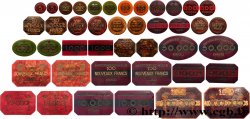
 Информация
Информация